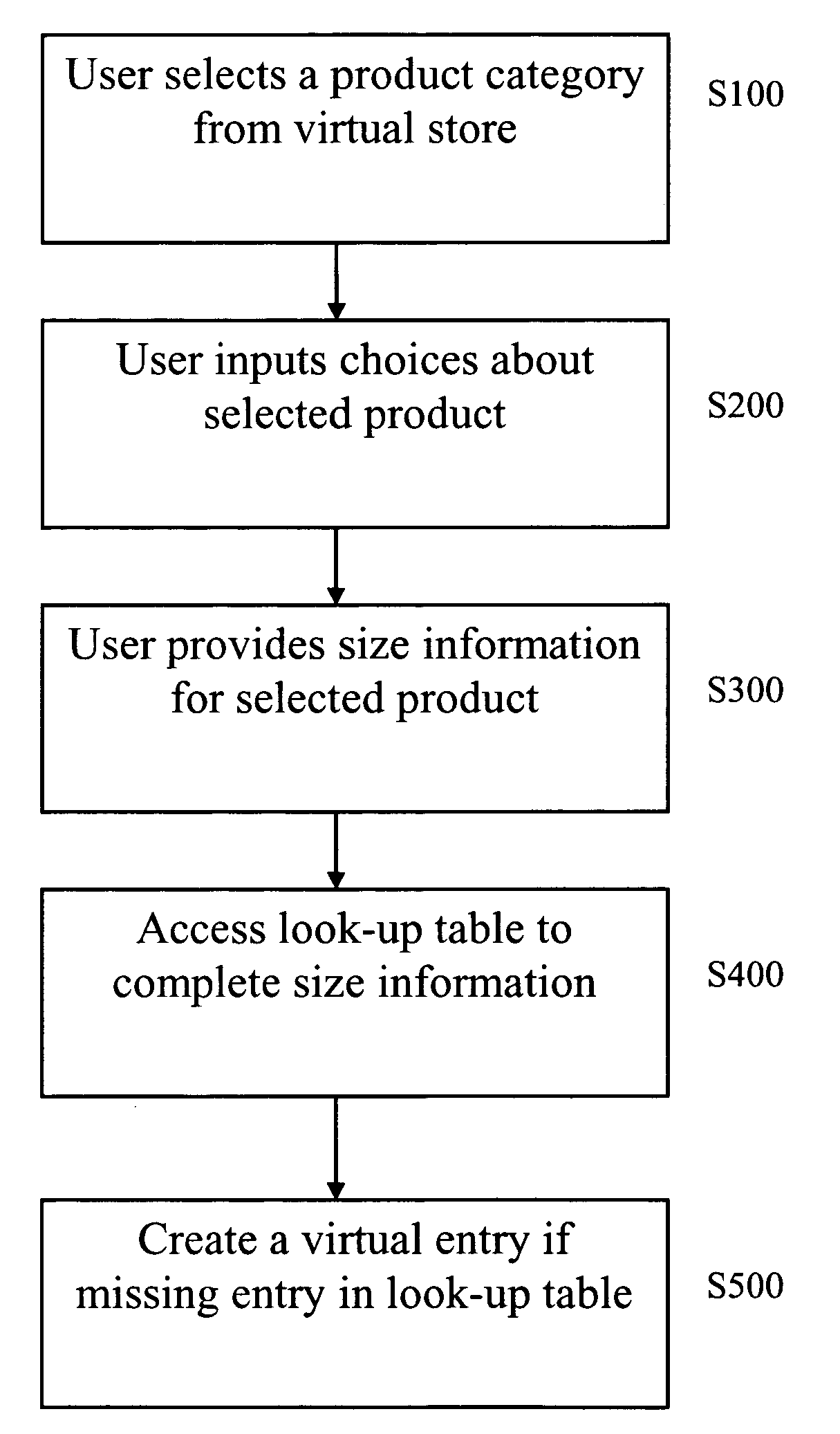Look-up table method for custom fitting of apparel
a look-up table and apparel technology, applied in the field of custom manufacturing of apparel, can solve the problems of high inventory cost, high inventory cost, high cost of inventory handling, etc., and achieve the effect of quick, easy and convenient ordering of custom apparel
- Summary
- Abstract
- Description
- Claims
- Application Information
AI Technical Summary
Benefits of technology
Problems solved by technology
Method used
Image
Examples
example 1
[0024]An example of a look-up table and the way in which it can be used to generate a custom garment on the basis of less-than-complete information from the consumer is provided here. This example is not meant to be limiting to full the scope of the invention, as many other specific implementations are consistent with the invention.
Structure of the Look-Up Table and Initial Pre-Population Along the Body Dimensions
[0025]Each entry in the look-up table can be considered a point in a multi-dimensional space, where the dimensions can be selected from all of the various human body dimensions and garment dimensions relevant to the construction of a garment. The value for a given individual human being along each of these dimensions in the multi-dimensional space is represented by a point in the space. The table is pre-populated with n points, each point representing the complete body dimensions of a specific (although anonymous) person who has been measured using a white-light scanning me...
example 2
[0031]Difficult to determine measures, for a body or garment, are aggregated into a database along with the corresponding easy to determine measures. A data point in this dataset may be created by a person filling out a questionnaire of self assessment questions (e.g. seat shape, self measured waist) and subsequently being scanned in a body scanner. This data may be compiled together to create an entry in the lookup dataset. When a customer wishes to purchase a garment, he or she may be asked to fill out a similar self assessment questionnaire to the one mentioned above. To determine specific measures for this customer's body or garment a “best match” may be found in the lookup dataset. This “best match” and the associated hard-to-determine measures may be used as surrogates for the new customer's measures. These measures may then be used to create a garment. A simplified example would be “suppose we scanned your twin, you should, therefore, answer the input survey in a similar fash...
PUM
 Login to View More
Login to View More Abstract
Description
Claims
Application Information
 Login to View More
Login to View More - R&D
- Intellectual Property
- Life Sciences
- Materials
- Tech Scout
- Unparalleled Data Quality
- Higher Quality Content
- 60% Fewer Hallucinations
Browse by: Latest US Patents, China's latest patents, Technical Efficacy Thesaurus, Application Domain, Technology Topic, Popular Technical Reports.
© 2025 PatSnap. All rights reserved.Legal|Privacy policy|Modern Slavery Act Transparency Statement|Sitemap|About US| Contact US: help@patsnap.com


